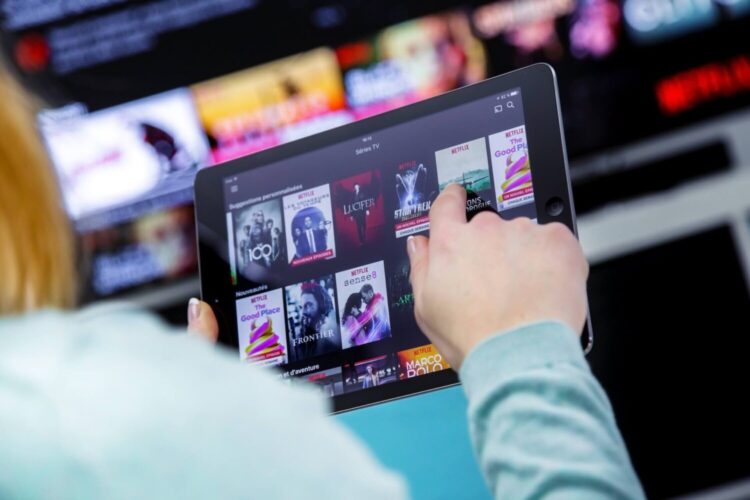The way people consume television has transformed dramatically in recent years. Viewers now have more options than ever, including Video-On-Demand (VOD) and Live TV services. Each offers distinct advantages and caters to different entertainment preferences.
Deciding which one suits your needs depends on factors like flexibility, content type, and viewing habits. This article explores the differences between VOD and Live TV, helping you determine the best option for your entertainment needs.
Table of Contents
Understanding VOD and Live TV

Before diving into the comparison, it is essential to understand what each service offers.
What is Video-On-Demand (VOD)?
VOD allows users to access a library of content anytime, offering full control over when and what to watch. This includes movies, TV series, documentaries, and exclusive programming.
- Key Features:
- Watch on your schedule without waiting for broadcasts.
- Pause, rewind, and replay at your convenience.
- Large libraries with diverse genres and titles.
VOD platforms often include both free and subscription-based services, catering to a range of budgets and preferences.
What is Live TV?
Live TV replicates the traditional television experience, broadcasting content in real time. This includes news, sports, and entertainment programs aired at scheduled times.
- Key Features:
- Access to live sports, breaking news, and current events.
- Scheduled programming for predictable viewing.
- Real-time interaction with events, such as live voting or social engagement.
Live TV platforms offer both standalone services and as part of broader internet-based packages. Before you switch to this option, make sure to explore the market and select reliable solutions like NordicIPTV or other similar services available in your area.
Advantages of VOD

For many viewers, VOD represents the ultimate in convenience and flexibility. Here are some of the key benefits:
1. Complete Control Over Viewing
With VOD, you decide when and where to watch your favorite content. There are no fixed schedules or missed broadcasts to worry about.
- Pause and Resume: Start a movie at home and finish it on your phone while commuting.
- Binge-Watching: Watch entire seasons of shows without waiting for weekly episodes.
- Offline Access: Many VOD services allow downloads for offline viewing.
2. Extensive Content Libraries
VOD platforms boast massive collections of movies, TV shows, documentaries, and niche content. These libraries are continually updated with fresh releases, ensuring viewers always have something new to explore.
- Diverse Genres: From blockbuster films to indie projects, there’s something for everyone.
- Exclusive Programming: Access original shows and movies unavailable on other platforms.
- Global Content: Explore international films and series with subtitles or dubbing.
3. Ad-Free Options
Many VOD services offer ad-free plans, allowing viewers to enjoy uninterrupted entertainment. While some platforms include ads in their free tiers, premium subscriptions eliminate them entirely.
- Enhanced Focus: Stay immersed in your content without commercial breaks.
- Faster Viewing: Save time by skipping ads entirely.
This feature is particularly appealing to viewers who prioritize a seamless experience.
Advantages of Live TV

Live TV remains popular for specific types of content and audiences. Here are the advantages it offers:
1. Real-Time Access to Current Events
Live TV excels at providing timely coverage of news, sports, and events. Viewers can stay updated on breaking news or watch live sports as they happen.
- Immediate Updates: Get the latest headlines without delays.
- Live Sports Action: Experience the thrill of watching games in real time.
- Event Coverage: Access award shows, political debates, and other live broadcasts.
This immediacy makes Live TV an essential choice for those who value staying informed or engaged with current events.
2. Familiar Scheduled Programming
For viewers who prefer a structured schedule, Live TV offers predictability. You know exactly when your favorite shows or broadcasts will air.
- Channel Surfing: Discover new programs by flipping through channels.
- Appointment Viewing: Enjoy the anticipation of weekly show releases.
- Local Channels: Access community news and events through local programming.
This format is ideal for individuals who enjoy the traditional television experience.
3. Social Interaction and Shared Experiences

Live TV fosters a sense of community by allowing viewers to watch programs alongside others in real time. This shared experience is particularly significant for major events like sports finals or award ceremonies.
- Live Social Media Engagement: Join conversations on platforms like Twitter during live broadcasts.
- Family Viewing: Gather with friends or family for game nights or live competitions.
- Interactive Features: Participate in polls, votes, or live chats during certain broadcasts.
Comparing Costs
Cost is often a deciding factor. While both services offer budget-friendly options, their pricing models differ.
VOD Pricing
VOD platforms generally operate on a subscription-based model, with tiers ranging from free (ad-supported) to premium (ad-free). Costs vary based on the size of the library and features offered.
- Base Plans: Affordable monthly fees for access to large libraries.
- Pay-Per-View: Some platforms allow users to purchase or rent specific titles.
- Bundling Options: Combine VOD services for additional savings.
Live TV Pricing

Live TV services tend to cost more due to licensing fees and real-time broadcasting infrastructure. Many platforms charge a monthly fee for access to a set number of channels.
- Base Packages: Include major networks and essential channels.
- Add-Ons: Premium channels, sports packages, or DVR features often come at an additional cost.
- Subscription Models: Monthly costs are typically higher than VOD.
Combining Both
Many households choose to combine VOD and Live TV services for a comprehensive entertainment experience. Hybrid platforms offer the best of both worlds, integrating on-demand libraries with live broadcasts.
- Flexibility: Watch events while maintaining access to a large content library.
- Cost-Effective Packages: Some platforms bundle VOD and Live TV at discounted rates.
- All-in-One Convenience: Access everything from one platform without juggling multiple subscriptions.
This approach works well for families or viewers with diverse entertainment needs.
Which Option is Right for You?

Depends on your viewing habits and priorities. Here are some factors to consider:
Choose VOD If:
- You have a busy or irregular schedule.
- You prefer watching movies or series at your own pace.
- You enjoy international or niche programming.
Choose Live TV If:
- You value staying updated on events and current affairs.
- You are a sports fan who wants real-time access to games.
- You enjoy the traditional TV experience with structured programming.
Both options cater to different needs, so understanding your priorities is key.
Conclusion
VOD and Live TV each offer unique advantages, catering to different entertainment needs. While VOD excels in flexibility and content variety, Live TV remains essential for real-time programming and communal viewing experiences. By assessing your preferences, budget, and lifestyle, you can choose the option that best suits your household or consider combining both for a well-rounded entertainment solution.
